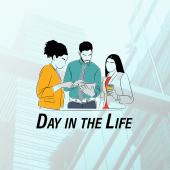In 1989, the world’s energy and environmental problems came to an end.
That year, two respected scientists announced that they had conducted an experiment involving electrolysis in heavy water with palladium electrodes. According to the researchers, one of whom was a world-renowned electrochemist, the experiment produced an unexpected tiny burst of energy as well as a small amount of neutrons and tritium.
More research was needed, but the scientists speculated that they had created the unique conditions needed to release controlled amounts of energy with nuclear fusion, all in a table-top device at room temperature. The press heralded the age of “cold fusion.”
During the spring of that year, the world of nuclear physics was turned upside down. This new discovery held the promise of an unlimited supply of clean, safe energy. The dangers of nuclear fission would soon end, and an era of accessible nuclear fusion was just around the corner. Some began to dream of cars, homes and offices all powered by tiny fusion reactors, cheap and efficient enough for everyday use. It was a technology to save humanity.
Except that it wasn’t. By the end of the year, most scientists agreed that the results were not credible. No one could reproduce the experiment and all sponsored research came to an end.
Cold fusion is now synonymous with bad science.
There was no suggestion that the cold fusion scientists knew their results were flawed. There were no serious allegations of fraud or misrepresentation. At the time, however, there was a sense of academic mania, journals vying for publication rights and the pride of two professionals who thought they had discovered something that would change history.
The world of scientific research is competitive. To be successful, professors around the world must publish or perish, and ideally they must published in respected, peer-reviewed academic journals. The bolder the claims, the more startling the data, the more likely they will catch the eye of editors at the most prestigious publications.
And at one time, publication in an academic journal was enough to propel the career of any aspiring scientist. But now a successful researcher must also see their results in the popular press, give interviews and maybe even publish a simplified summary of their work in a non-fiction book.
As in all professions, the pressure to succeed sometimes encourages willful blindness. To a researcher under stress, random data can show patterns. Assumptions are ignored and experiments unconsciously designed for anticipated results. There is a natural desire to interpret information in a way that meets expectations, and once a belief takes hold the power of cognitive dissonance pushes our fallible minds toward conviction and confidence. That’s when scientists start holding press conferences after just one set of experiments.
But we non-scientists are not immune. It’s easy to criticize others and poke fun at the cold fusion fiasco. It’s easy to make generalizations about bias and motivations in science. In reality, however, scientists tend to be the most careful and critical thinkers. The scientific method is designed to prove a hypothesis wrong, to undermine a conclusion. Good researchers know about heuristic biases and the better peer-reviewed journals watch for the conclusions that are “too good to be true.”
The rest of us, lawyers included, don’t benefit from the same rigor of the scientific method, nor do we live in a professional world designed to be skeptical, challenge and critique without inhibition. Today, about one article a day is retracted by a scientific journal due to flawed research. But that happens because the scientific community actively hunts for flaws.
Other professionals, lawyers included, are not subject to the same standards. Our work may be criticized in court, but one can spend a career making untested legal assumptions. We can write contracts, cease and desist letters or settlement agreements all day and never face the embarrassment of having one’s life work picked apart and retracted.
Cold fusion is a fascinating story, like other examples of bad science, because they are so rare. We should be so lucky to have such rare mistakes in our own professional lives.




